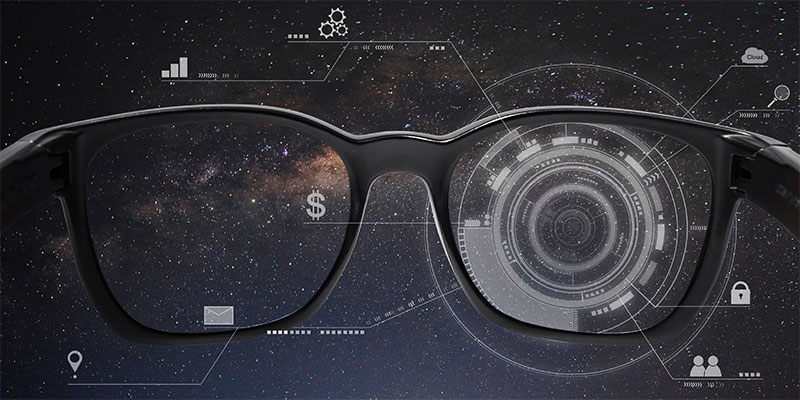Microcap expert Chris Wood’s big call on Apple (AAPL) last week turned a lot of heads...
During our discussion, Chris predicted Apple will become the world’s first $10 trillion company.
Which would require Apple stock to gain roughly 400% from here.
The feedback is pouring in. So I got Chris on the phone again for more on this idea. Below, he shares why he’s “doubling down” on his Apple call. He also also shares a microcap from his Project 5X portfolio to put on your radar.
Chris Reilly: Chris, to catch readers up…Your premise is Augmented Reality “smart glasses” will replace smartphones… and that Apple will dominate that colossal new market.
Do I have that right?
Chris Wood: Yes. Apple is the king of making products people love. I expect the company will dominate in AR glasses, just like it does in smartphones.
Chris R: For readers who don’t know, you’re our microcap expert. You hunt for tiny stocks disrupting huge industries…
So why are you focused on Apple… the biggest company on Earth?
Chris Wood: Although I don’t recommend large companies, I pay very close attention to what they’re doing.
Big companies spend a lot of money. And when you can find microcaps on the receiving end of a multibillion-dollar deal from a giant like Apple… you can make a big profit. I’ll tell you about two such microcaps in a second.
But if you’re asking for my hands-down, surefire bet to profit off AR, the answer’s Apple.
You see, Apple has a unique trait that sets it apart from the other tech giants. Apple doesn’t rely much on smaller companies to supply parts for its products. It’s nearly impossible to compete with because it’s “vertically integrated.”
Chris R: You’ll have to explain that…
Chris Wood: It’s a fancy way of saying Apple controls its own destiny and doesn’t rely much on external suppliers. Apple makes its own hardware… software… design… you name it. It even started making its own chips years ago for iPhones and iMacs.
But Apple is an outlier. Most Big Tech companies aren’t as vertically integrated. They rely on other companies, often ones that are tiny in comparison, to supply key parts in their products.
That will hold true for AR. Aside from Apple, all the big tech companies need small companies to supply components for their AR headsets.
Chris R: What kind of components?
Chris Wood: The most important part in the AR headset is the microdisplay.
A microdisplay is a tiny screen, typically less than two inches diagonal.
It’s the technology that powers AR headsets.
Longtime readers may recognize the name Kopin (KOPN).
It’s a small company that builds and supplies microdisplays to big players.
Kopin’s tech is used in most major headsets… from the RealWear HMT-1Z1 to the Toshiba dynaEdge.
Google even relies on Kopin for its Google Glass Enterprise 2 headset.
Remember, Google is not as vertically integrated as Apple. It needs Kopin to make these AR glasses.
Chris R: To be clear, Kopin is not a “buy” today. Your Project 5X readers have already cashed out for a 399% gain.
Do you like any other AR microcaps today?
Chris Wood: We were happy to book a big win in Kopin. But then late last year, something even better came across my radar: eMagin (EMAN).
EMagin has more advanced microdisplay tech than Kopin. One that’s solving a huge problem in the industry.
Chris R: What’s that?
Chris Wood: Today, around 70% of head-mounted displays like AR headsets use liquid crystal technology.
LCDs are nice and bright. And they do well in sunlight. Plus, LCD was the prevailing technology when the microdisplay market first took off during the early 2000s. The US military uses it in weapons and vehicle sight programs… as well as fighter pilot helmets.
You’ve probably heard of the F-35. It’s the world’s highest-tech fighter jet. To fly one, a pilot needs to wear the world’s highest-tech helmet—which costs $400,000.
But when pilots try to land this plane on aircraft carriers at night, a green glow from this crazy-expensive helmet makes it essentially worthless. The glow drowns out lights from the outside. So pilots can’t see the carrier’s lights or cues from the crew necessary to land safely.
It turns out, the LCD’s backlighting is what causes the “green glow” problem.
And that’s not the only issue with LCD microdisplays.
They also consume a lot of power, which hurts battery life and boosts the cost. And since the backlight is always on, it makes for poor contrast. So images aren’t as sharp and detailed.
So, while LCD technology currently dominates the microdisplay market, it’s begging for disruption.
Chris R: EMagin’s solving this problem?
Chris Wood: Exactly. The company’s patented technology changes the game in microdisplays.
You may have heard of OLED as the latest in TV technology. In short, OLED uses light more efficiently to produce a brighter and crisper image.
OLED technology is much newer than LCD tech, but it’s already very popular in smartphone displays. You’ll find it in many of the newest smartphones including the iPhone 13 and Samsung Galaxy S20.
And it’s poised to become the dominant microdisplay technology over the coming years.
Chris R: And eMagin uses OLED?
Chris Wood: I won’t bore readers with the specifics, but eMagin has created better OLED tech. It has all the strengths of traditional OLEDs, but none of their weaknesses.
All these advantages are important to military, commercial/industrial, and consumer customers alike.
This clearly sets the stage for eMagin’s tech to become the dominant technology in microdisplays.
I recommended eMagin to my Project 5X members in December 2020. We’re up 86%, so it’s not quite a “ground floor” opportunity anymore. And I currently rate the stock a HOLD in our portfolio. But readers can consider taking a small stake on weakness. It’s one to keep an eye on.
Chris R: Thanks, Chris.
Chris Reilly
Executive Editor, RiskHedge




